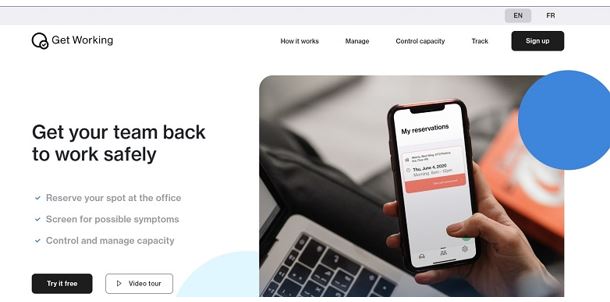When COVID-19 hit, workers across all industries made major shifts in their daily routines—like shutting down offices and working from home. Now, after months of video calls (with plenty of adorable interruptions by pets and children), workers are finally starting to return to offices and coworking spaces that are going to be a new a normal now.

It doesn’t look like it did before, though. With the threat of the coronavirus still looming, a number of health and safety precautions need to be considered when bringing employees back into communal workspaces.
But you can still reap the social and networking benefits of sharing space with others, as well as the increased productivity that comes with having a dedicated workspace for you and your coworkers.
Here is a list of tips for returning to coworking spaces safely.
Stagger the Return
Since coworking spaces bring together people from different businesses and companies, each person is likely arriving at the office space from another “social bubble.” And because everyone is going home to different families, partners, or friends each evening, it’s important to keep contact tracing information up-to-date daily.
A staggered return is probably the best approach to keep everyone even safe.
Instead of everyone arriving back in the shared space at once, re-introduce a few coworkers from the same company on one day, or in the mornings on a few specific days. Entrepreneurs or solo workers can use the space a few at a time, at later times on other days, and so on.
Reserve a Spot
Staggering returns may seem complicated, but a reservation system like Get Working can keep everyone organized. By booking a specific space for a set block of time, workers can limit the number of people they come in contact with or share space with at any given time.

A reservation and check-in system also ensures that capacity limits are being respected according to local public health guidelines.
Placing limits on how long workers or companies can book the space also ensures that everyone gets a fair chance at transitioning back into coworking spaces.
Take Preventative Measures
The space itself should be frequently sanitized, with supplies available to workers for wiping down tables, chairs, and other equipment after use. Increased air filtration is also recommended to keep the space well-ventilated, which can be achieved with electronic air filters, fans, or open windows.
The people using the space should also take precautions, such as frequent hand-washing, wearing a mask, and practicing social distancing from other workers in the area. Temperature checks performed by security staff or office administrators could also be implemented upon arrival. (Get Working can also help employees screen for and monitor their symptoms by sending digital self-assessment surveys before each shift.)
Define different work zone
You should define each work zone separately; this will you to do proper management. Segmentation of the work zones will provide a belonging sense to your regular customers, and you could do this segmentation through different colors based on the zones. Splitting the zones will also help you track the work done in every zone and further reduce your management effort for your business and your coworking space.
Use Clear Instructional Signage
All of those precautions may be ignored by workers eager to return to their old routines, so make their importance known by posting clear instructional signage around the shared space about mandatory guidelines. Signs can be used to create one-way aisles on the floor, on seating to indicate safe distances between chairs, and on tables to remind people to wipe them down after each use.
Posters can also provide visual reminders for people to wear masks, wash their hands, and remain six feet apart.
Monitor and Manage Stress
Since most coworking space users are part of small businesses or small entrepreneurial endeavors, they may not have an extensive benefits package available to them. As such, co-working spaces can step up to help out users with stress management, which is particularly important during such an unusual and anxious time.
Perhaps one room or corner can be designated for yoga and meditation, with video resources and app recommendations provided. During COVID-19, it’s best to implement a bring-your-own-yoga-mat policy to avoid sharing equipment.
Even a small area dedicated to providing tea or coffee and individually wrapped snacks can encourage workers to take a break once in a while to check-in with themselves and manage their stress.
Coworking spaces may not go back to “normal” any time soon, but with these tips, you can ensure a new—and safe—way to return to communal offices.

